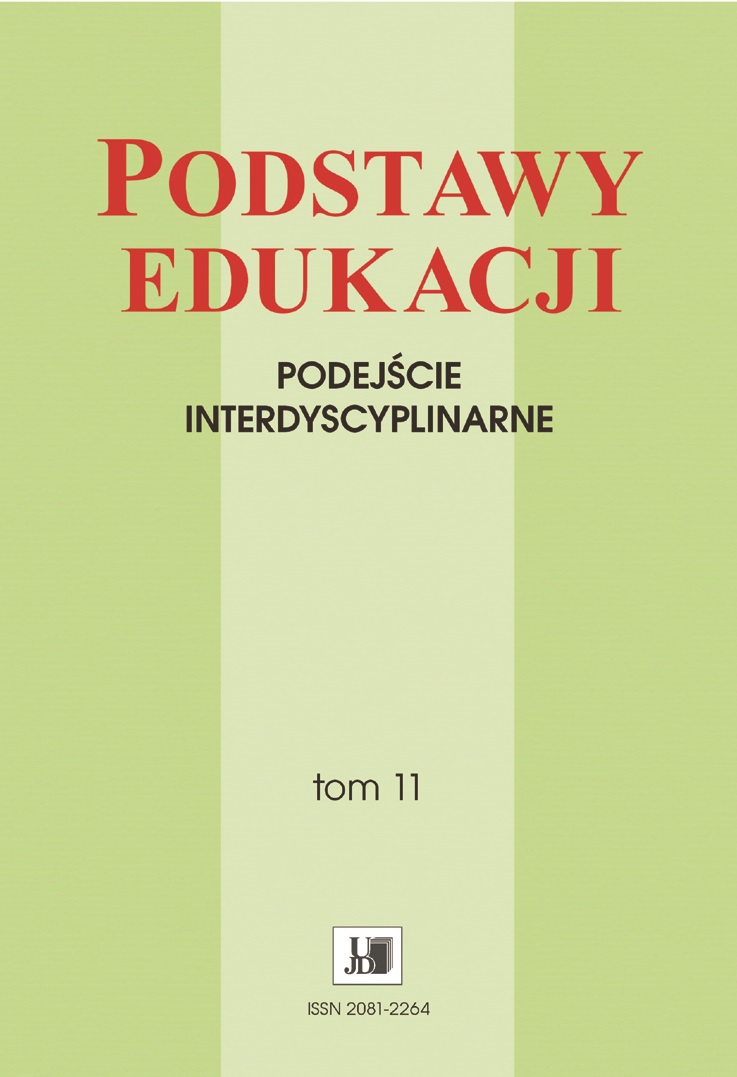Abstrakt
Potrzebne jest właściwe zrozumienie poziomu zaangażowania mózgu w proces nauki języka obcego, w tym wymowy, oraz – co ważniejsze – występuje potrzeba praktycznego przełożenia tej wiedzy i zastosowania jej w nauczaniu języków obcych. Mózg zaangażowany jest w każdy aspekt procesu przyswajania języka, włączając w to artykulację. Akcent jest m.in. zjawiskiem natury (neuro)kognitywnej, tak więc nauczanie wymowy powinno być zorientowane na funkcje poznawcze przy pomocy jak największej liczby zmysłów. Perspektywa (neuro)kognitywna zakłada, że mowa, a w szczególności wymowa języka obcego, są niezależnie od wieku najpierw funkcjami mózgu, a dopiero później produktem procesów, za które odpowiedzialne są narządy mowy. Mózg stara się zinternalizować procesy artykulacyjne określonego języka i przenosić je ze świadomości do podświadomości, aby uczynić proces wymowy możliwie jak najmniejszym wysiłkiem poznawczym. Na wczesnych etapach procesu przyswajania języka obcego pomocne okazać się może multisensoryczne podejście do nauczania poprawnej wymowy.
Bibliografia
Baddeley, A.D. (1993). Your memory: a user’s guide. London: Prion Books Ltd.
Baese-Berk, M.M., Bradlow, A.R., Wright, B.A. (2013). Accent-independent adaptation to foreign accented speech. The Journal of the Acoustical Society of America, 133 (3), 174–180. https://doi.org/10.1121/1.4789864.
Bialystok, E. (2001). Bilingualism in development: language, literacy, and cognition. New York: Cambridge University Press.
Bosch, L., Sebastián-Gallés, N. (2001). Evidence of early language discrimination abilities in infants from bilingual environments. Infancy, 2 (1), 29–49. http://dx.doi.org/10.1207/S15327078IN0201_3.
Byrd, D. (1993). 54,000 American stops. UCLA Working Papers in Phonetics, 83, 97–116.
Cherry, E.C. (1953). Some experiments on the recognition of speech with one or two ears. The Journal of the Acoustical Society of America, 25, 975–979. http://dx.doi.org/10.1121/1.1907229.
Crystal, T.H., House, A.S. (1988a). Segmental Duration in Connected-Speech Signals: Current Results. The Journal of the Acoustical Society of America, 83 (4), 1553–1573.
Crystal, T.H., House, A.S. (1988b). A note on the durations of fricatives in American English. The Journal of the Acoustical Society of America, 84, 1932– 1935.
Ingvalson, E.M., Dhar, S., Wong, P.C.M., Liu, H. (2015). Working memory training to improve speech perception in noise across languages. The Journal of the Acoustical Society of America, 137 (6), 3477–3486. http://dx.doi.org/ 10.1121/1.4921601.
Jarrett, C. (2015). Great Myths of the Brain. West Sussex: Wiley Blackwell.
Koch, K., McLean, J., Segev, R., Freed, M.A., Berry II, M.J., Balasubramanian, V., Sterling, P. (2006). How Much the Eye Tells the Brain. Current Biology, 16, 1428–1434. http://dx.doi.org/10.1016/j.cub.2006.05.056
Kosslyn, S.M., Rosenberg, R.S. (2001). Psychology. The brain, the person, the world, Boston: Allyn & Bacon.
Larson, C.D. (1912). Your Forces and How to Use Them. http://www.sacredtexts.com/nth/yfhu/index.htm [dostęp 19.12.2018].
Lim, S.J., Holt L.L. (2011). Learning foreign sounds in an alien world: videogame training improves non-native speech categorization. Cognitive Science, 35 (7), 1390–405. https://dx.doi.org/10.1111/j.1551-6709.2011.01192.x.
Lipton, B. (2015). The Biology of Belief. Carlsbad, California: Hay House, Inc.
Loftus, E.F. (1980). Memory: Surprising New Insights into How We Remember and Why We Forget. Reading, Massachusetts: Addison-Wesley Publishing Company.
McClelland, J.L., Fiez, J.A., McCandliss, B.D. (2002). Teaching the /r/-/l/ discrimination to Japanese adults: behavioral and neural aspects. Physiology & Behavior, 77 (4-5), 657–662. http://dx.doi.org/10.1016/S0031-9384(02)00916-2.
Mesgarani, N., Cheung, C., Johnson, K., Chang, E.F. (2014). Phonetic Feature Encoding in Human Superior Temporal Gyrus. Science, 343, 1006–1010. http://dx.doi.org/10.1126/science.1245994.
Nazzi, T., Jusczyk, P.W., Johnson, E.K. (2000). Language discrimination by English learning 5-month-olds: effects of rhythm and familiarity. Journal of Memory and Language, 43, 1–19. http://dx.doi.org/10.1006/jmla.2000.2698.
Odisho, E.Y. (2014). Pronunciation is in the Brain, not in the Mouth. A Cognitive Approach to Teaching it. Piscataway, New Jersey: Gorgias Press.
Peigneux, P., Orban, P., Balteau, E., Degueldre, C., Luxen, A., Laureys, S., Maquet, P. (2006). Offline persistence of memory-related cerebral activity during active wakefulness. PLoS Biology, 4 (4), e100. http://dx.doi.org/ 10.1371/journal.pbio.0040100.
Pennington, M.C., Richards, J.C. (1986). Pronunciation revisited. TESOL Quarterly, 20 (2), 207–225. https://doi.org/10.2307/3586541.
Ramus, F., Nespor, M., Mehler, J. (1999). Correlates of linguistic rhythm in the speech signal. Cognition, 73, 265–292. http://doi.org/10.1016/S00100277(00)00101-3.
Spalding, K.L, Bergmann, O., Alkass, K., Bernard, S., Salehpour, M., Huttner, H.B., Boström, E., Westerlund, I., Vial, C., Buchholz, B.A., Possnert, G., Mash, D.C., Druid, H., Frisén, J. (2013). Dynamics of hippocampal neurogenesis in adult humans. Cell, 153 (6), 1219–1227. http://doi.10.1016/ j.cell.2013.05.002.
Schendel, Z.A., Palmer, C. (2007). Suppression effects on musical and verbal memory. Memory & Cognition, 35 (4), 640–50.
Treisman, A.M. (1964a). Monitoring and storage of irrelevant messages in selective attention. Journal of Verbal Learning and Verbal Behavior, 3, 449–459. http://doi.10.1016/S0022-5371(64)80015-3.
Treisman, A.M. (1964b). Selective attention in man. British Medical Bulletin, 20, 12–16. https://doi.org/10.1093/oxfordjournals.bmb.a070274.
Werker, J.F., Tees, R.C. (1984). Cross-language speech perception: Evidence for perceptual reorganization during the first year of life. Infant Behavior and Development, 7 (1), 49–63.
Wolfram, W. (2000). Everyone Has an Accent: A North Carolina professor advocates teaching tolerance for dialects. Teaching Tolerance, 18, 18–23.
OŚWIADCZENIE AUTORA:
Mam świadomość, że czasopismo jest wydawane na licencji Creative Commons - Uznanie autorstwa (https://creativecommons.org/licenses/by/4.0/legalcode).
Przesyłając artykuł wyrażam zgodę na jego udostępnienie na tej licencji.
